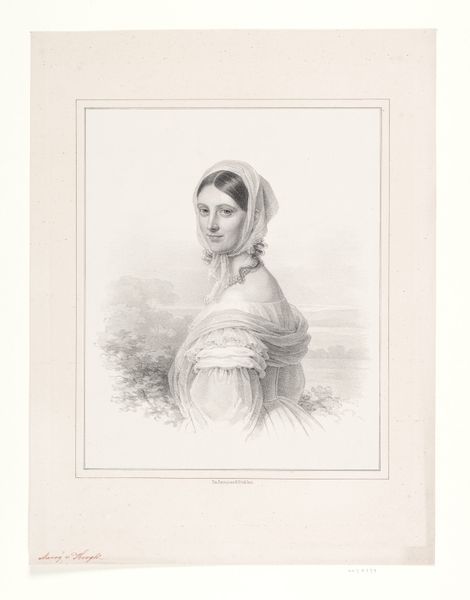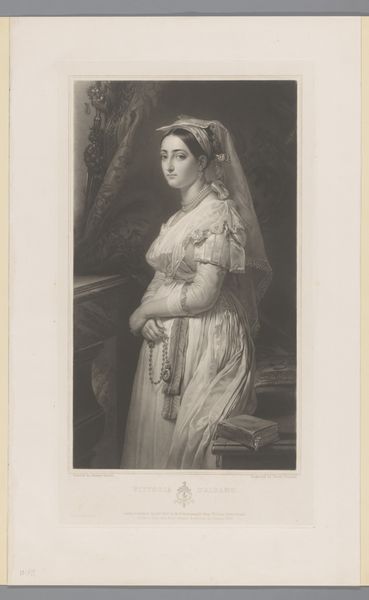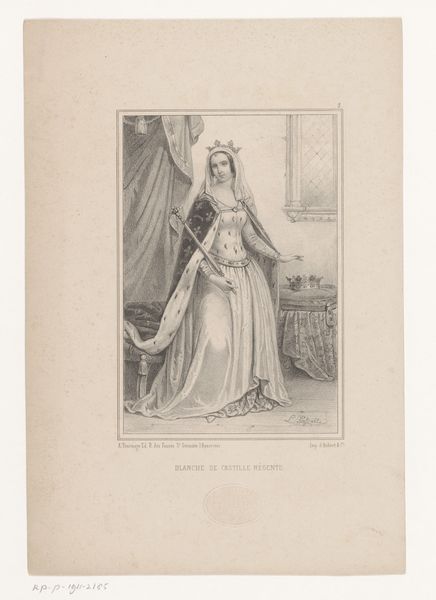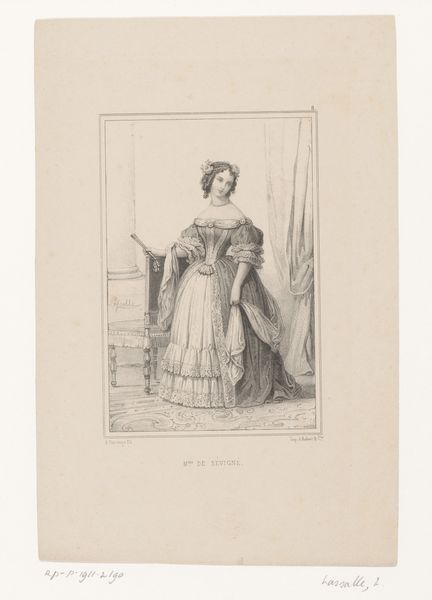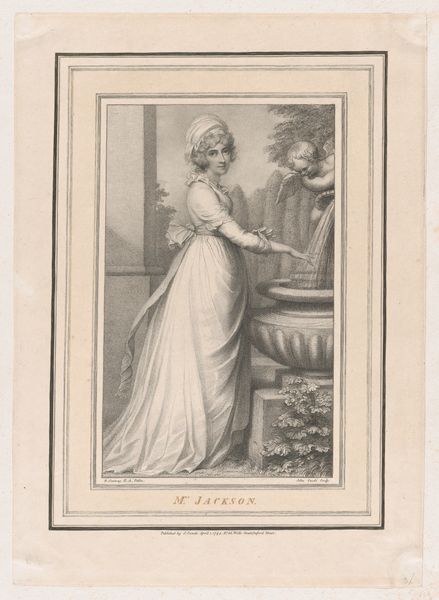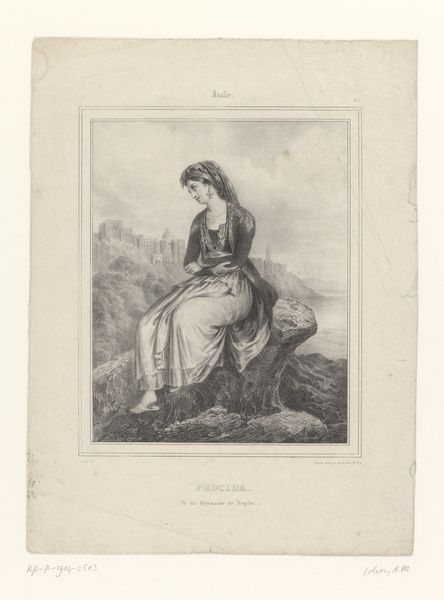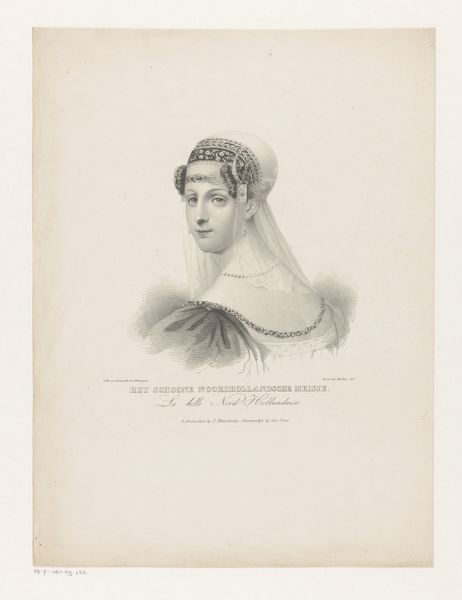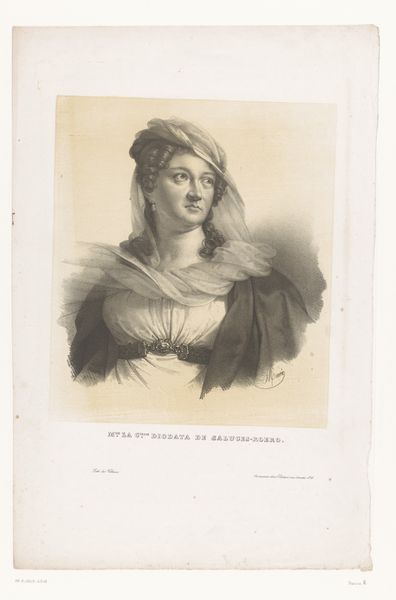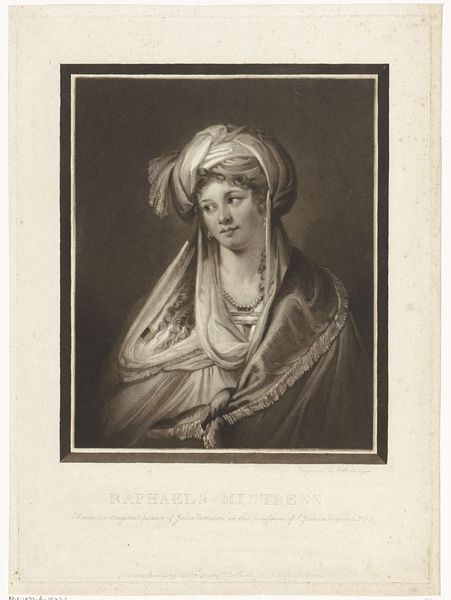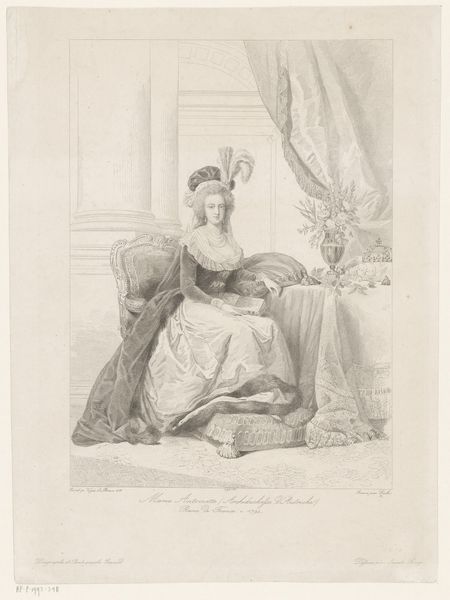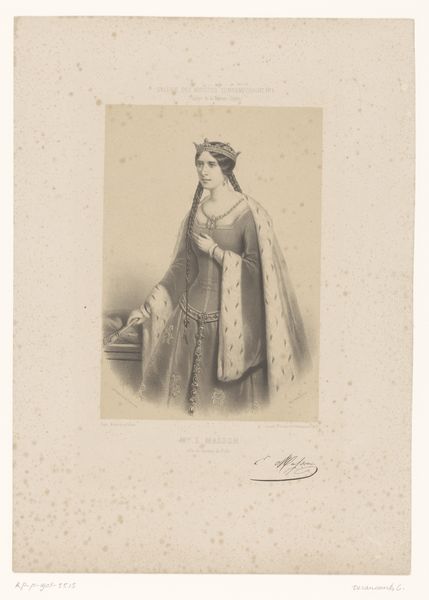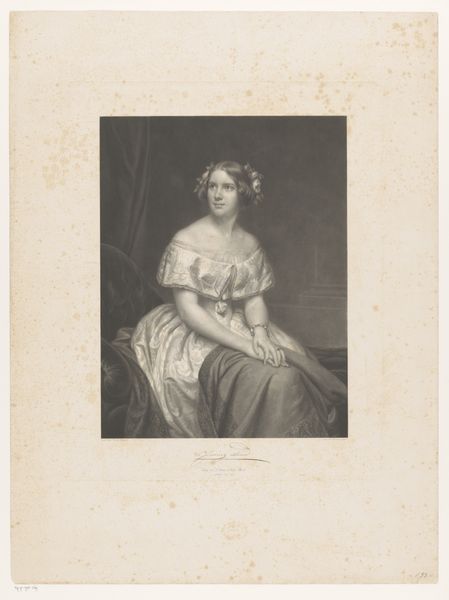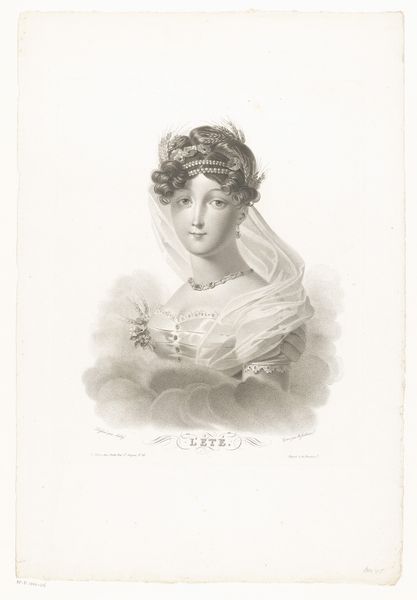
Dimensions: height 198 mm, width 136 mm
Copyright: Rijks Museum: Open Domain
Curator: Oh, there's a certain delicacy to this one, isn't there? It’s "Portret van Amalia van Oldenburg, koningin van Griekenland" – portrait of Amalia of Oldenburg, Queen of Greece, attributed to Franz Zastera sometime between 1836 and 1880. What strikes you? Editor: Immediately, a controlled melancholy. It's almost like she’s a marble statue brought to life with charcoal, existing both in reality and as a representation of power… though the softness suggests otherwise. I see that pencil is the predominant medium, offering intricate detail with a muted grayscale. Curator: Yes, you get that tangible sense, don’t you? This drawing, and remember it *is* a drawing, so automatically about the trace and the process – captures her as almost ethereally composed, regal of course in that fantastic fur-lined robe and ornate headdress. But observe how soft the lines are. Almost pleading in a way. Editor: It's the layers of luxury and craft that draw me in – literally. The work involved, extracting material, processing graphite, commissioning an artist—that labor and expense creates that portrait. Also, the paper itself is quite substantial. What quality was it? Where was it sourced? Someone must have manufactured it to make images like this. This kind of paper production indicates industrial development. Curator: That contrast, isn’t that curious? Considering this was around the Romanticism and Realism eras… she exists against this blurry almost dreamscape background. Yet she's also got this incredible level of detail – you see all her jewelry and the texture in the fabric of the robe. It’s all at once aspirational, and trying to capture her as a "real" person. Though obviously romanticized for the time. Editor: Exactly. That positionality gets blurred between labor and wealth in the image; a material dialectic. The portrait itself operates as a commodity, designed to promote, well, consumption, which the materiality underscores. That’s what it brings forth in this representation of majesty, I suppose. The artist uses line and value to signify both luxury and presence. Curator: I think for me it whispers something of that push and pull of a ruler, balancing duty, persona and I wonder at times also about Amalia herself and who she really was in it all… Well, certainly a thought to carry with us. Editor: Absolutely, and now to ponder the labor, economy, and paper production involved. Food for thought!
Comments
No comments
Be the first to comment and join the conversation on the ultimate creative platform.
